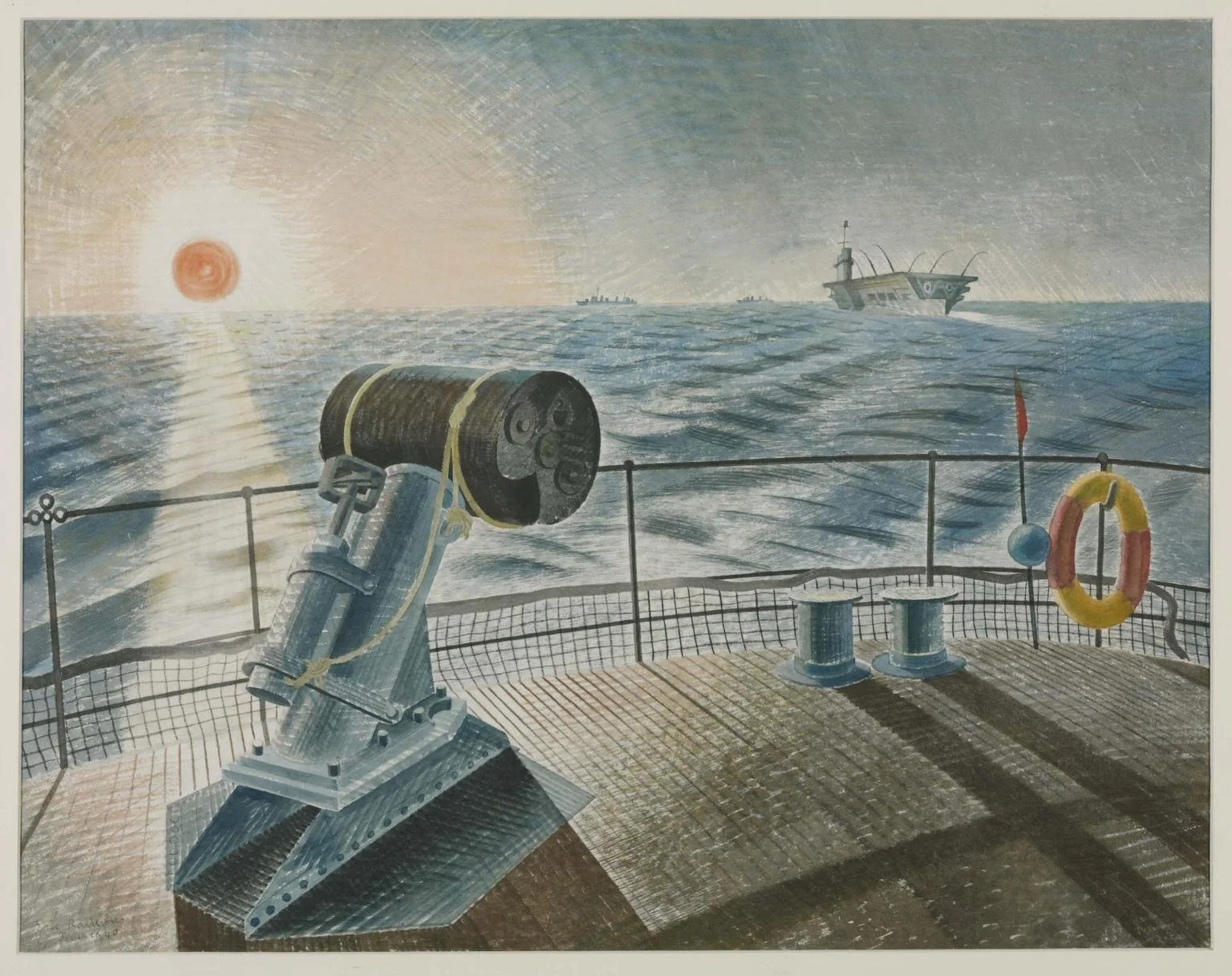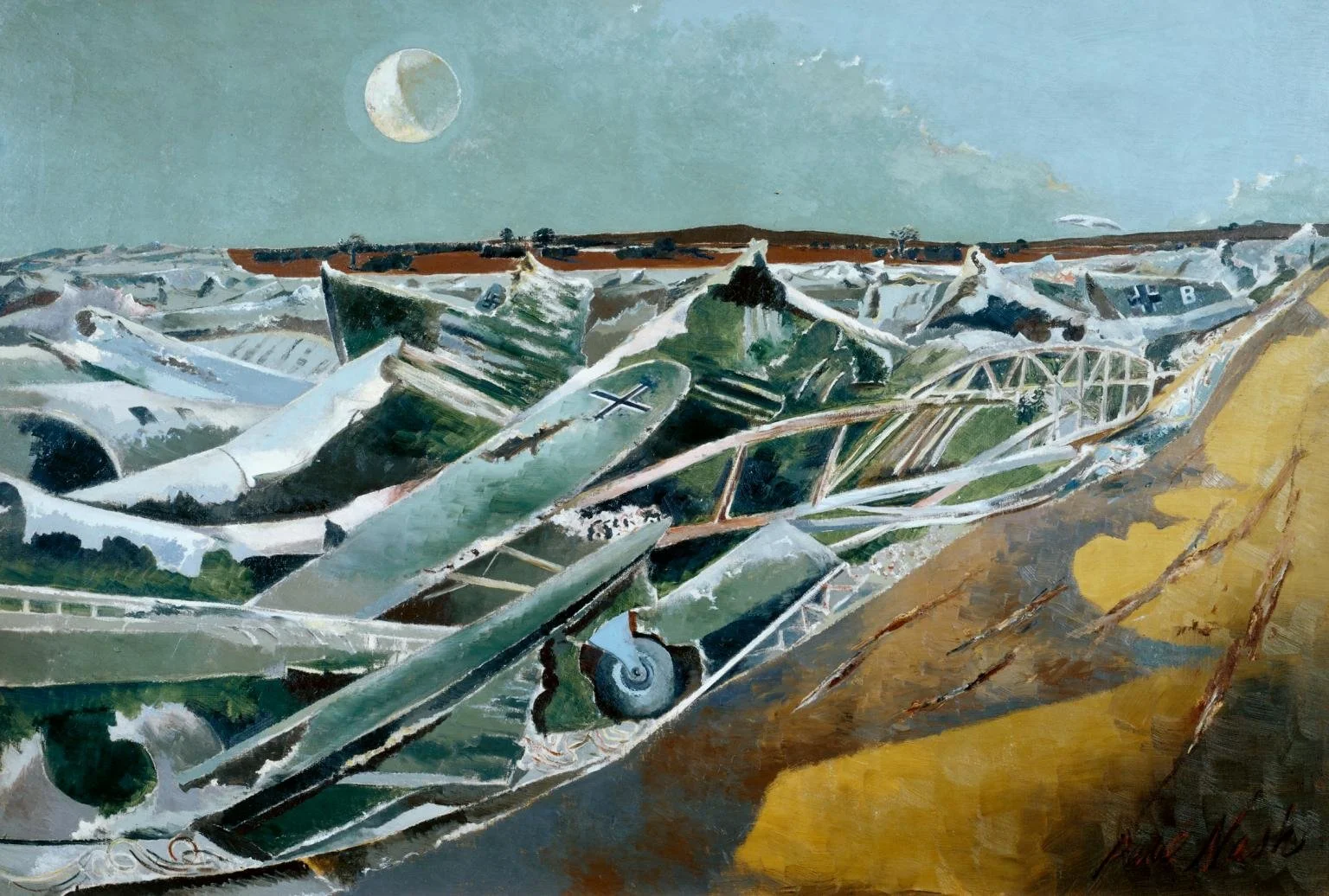Middle Watch - design inspiration
John Stevenson When I spent some days in the Imperial War Museum, I certainly knew that when he [the war veteran] was referencing an Admiralty Trawler, this is what he meant, so then I could actually visualise it. That research took me to the place where I went. Well, okay. Maybe it would be an interesting visual style to do this film in?
“I thought it should be in 2D. And then it occurred to me that being influenced by the English war artists of the Second World War, that kind of rather chunky graphic, painterly style.. Eric Ravilious, Barnett Freedman and John Everett, people like Paul Nash.”
John Stevenson But that would be an interesting visual style for an animated film, that I hadn't seen, but also because the film was set in the 2nd World War. It would add a sort of a weird integrity, perhaps to the visual language. The war artist, even though they worked in a very graphic style sometimes, you know, their task was to record events truthfully…so possibly taking an art style, which was both graphically interesting but but sort of connected to truth and integrity might help you believe the reality of the sequences. So that was the thinking.
Midnight Sun, Eric Ravilious, 1940, Photo: © Tate, London [2022]
John Stevenson So then I went did a whole bunch of research looking at war artists, you know, going to, you know, going to various sort of museums and just sort of immersing myself looking at paintings, buying, buying sort of second-hand books from artist monographs, from the Second World War, you know, and all of this, you know, I overdo all of this. This is what I do. So. So, you know, I had I've got tons of books on Second World War artists, but in the end, what it came down to was that Prawta and then Ayeisha kind of synthesised all of these influences into a unique and specific language for Middle Watch.
Totes Meer (Dead Sea), Paul Nash, 1940-41, Photo: © Tate, London [2022]
John Stevenson It's not based on any particular war artist, its not apeing Eric Ravilious or John Everett, you know, Stephen Bone or anybody like this. It's it's own thing, but it has.. it has a legacy to those guys. You can see that where we got to started there, even though we moved away from it into our own thing. And that, to me, is the journey. And that's fine. So start with the facts. Start with facts and evidence. Once you sort of feel confident in facts and evidence, then you can go, well, now, I don't need all these facts I don't need all this evidence. I can... I can come up with my own interpretation or version, but I know it will be extrapolated from truth and research.
Converting a Cunarder to a Merchant Cruiser, John Everett, 1918, Photo: © RMG, London [2022]




